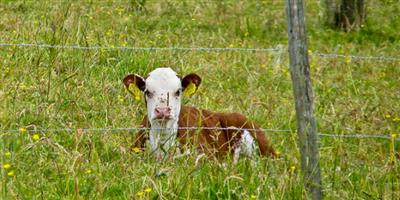by
Was I the only one that didn't get the memo? We must have been watching reruns of Seinfeld when Jack and Rexella Van Impe finally let the doomsday cat out of the bag. Thank goodness woefully reliable signs of the last trading days didn't get past the watchful eye of live cattle futures at the CME.
Not to ruin your Friday, but the ongoing implosion of summer live cattle futures seems to be predicting pretty much the end of civilization as we know it. As I write, the June contract has slipped under 114 for the first time since May of 2012. Apparently, the board's terrorizing horsemen somehow anticipate feedlot sales collapsing to $112-113 by late June.
If these panic mongers are fully justified, it will mean that the judgment seat of supply and demand requires retribution of $27 per cwt or more (i.e., from the spring high to the summer low), nearly three times the long-term average seasonal swing.
The market gods are mad indeed.
They said it's never wise to fight city hall. Nevertheless, I think this new market mess says more about the broken status of the futures market than it does regarding extraordinary bearish shifts in fundamentals over the next several quarters.
Yes, beef supplies will no doubt seasonally expand from now through midsummer. But I don't know an analyst worth his/her salt who expects commercial tonnage much over 2.1 billion pounds. While that's 4{2fba0047518ad2e639da733ea78e24abf77cec06f485a26b152e17f2a77aa67a}-5{2fba0047518ad2e639da733ea78e24abf77cec06f485a26b152e17f2a77aa67a} greater than the early summer of 2015, it stands to be only fractionally more than producers put on the plate last month (when the 5-area fed steer averaged $136.71).
In June 2015, the 5-area average totaled $151.25. To be sure, given the potential for more production this summer (the per capita supply of poultry is also expected to grow a bit), it seems realistic to assume 2016 should fall short of this mark. Additionally, beef demand has been lagging behind the prior year since the third quarter of 2015. For example, fed prices in March trailed 2015 by as much as 16{2fba0047518ad2e639da733ea78e24abf77cec06f485a26b152e17f2a77aa67a}.
Yet if we assume a similar pattern in June, the early summer cash average could be expected to average close to $127. By all means, feel free to trim your price projection by $2-$4 based upon expanded production.
But by $14-$15? Cut me a break.
Fundamentally, none of this adds up. While I've been around the block enough times to know that realities of supply and demand don't always make sense in the mysterious land of market, numbers and action this screwy makes me seriously wonder if something has gone haywire with the basic machine of price discovery.
I've said it before and I'm about to say it again. Commercial longs have grown to hate the profound dysfunction of live cattle futures. In a nutshell, the CME is currently asking them to risk delivery of commodity specs that no longer fit their practical business model. If the live cattle contract was truly workable for commercial longs, retailers and packers would be aggressively buying extreme discounts as we speak, locking up extraordinary profits in the process.
But they are not because it is not.
Until the board can somehow regain its commercial viability (i.e., contracts with meaningful specs that truly serve real hedging), cattle futures serve sensible marketing no more than a weekend trip to Vegas serves retirement planning.
© Copyright 2016 DTN/The Progressive Farmer. All rights reserved.





